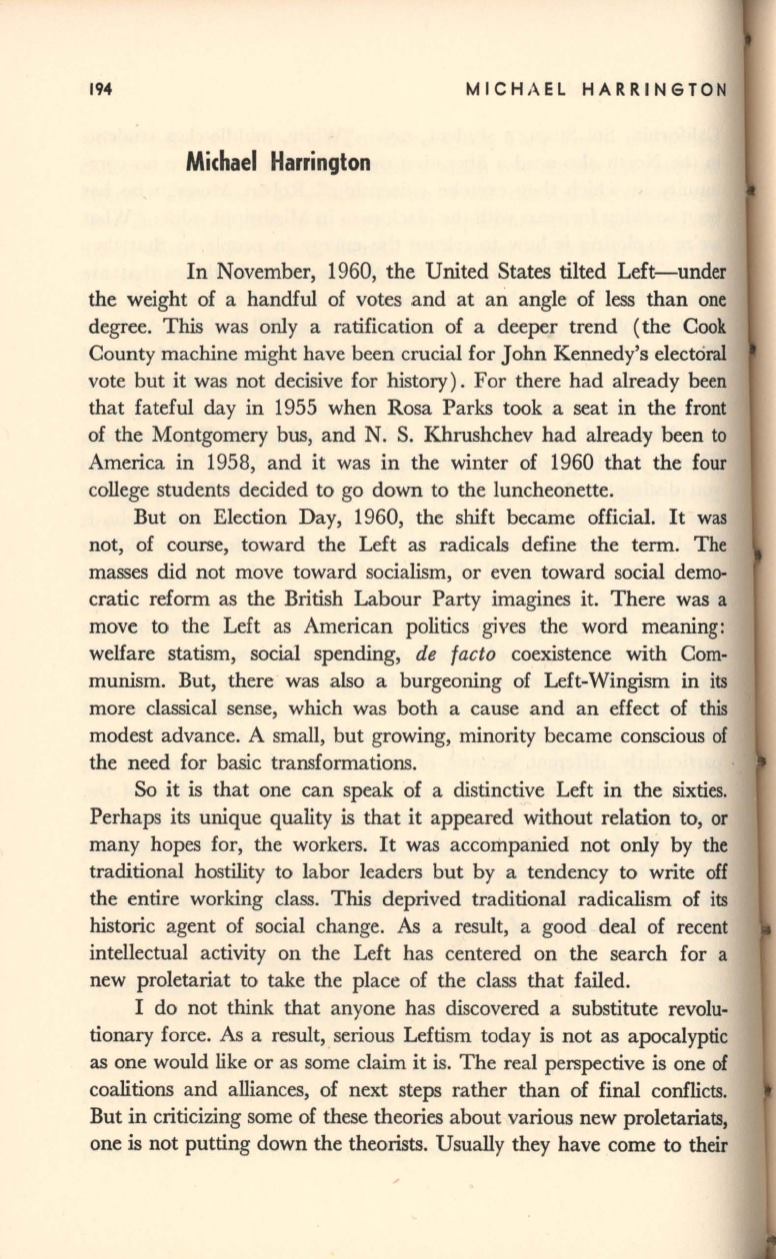
194
MICHAEL HARRINGTON
Michael Harrington
In November, 1960, the United States tilted Left-under
the weight of a handful of votes and at an angle of less than one
degree. This was only a ratification of a deeper trend (the Cook
County machine might have been crucial for John Kennedy's electoral
vote but it was not decisive for history). For there had already been
that fateful day in 1955 when Rosa Parks took a seat in the front
of the Montgomery bus, and N. S. Khrushchev had already been to
America in 1958, and it was in the winter of 1960 that the four
college students decided to go down to the luncheonette.
But on Election Day, 1960, the shift became official. It was
not, of course, toward the Left as radicals define the term. The
masses did not move toward socialism, or even toward social demo–
cratic reform as the British Labour Party imagines it. There was a
move to the Left as American politics gives the word meaning:
welfare statism, social spending,
de facto
coexistence with Com–
munism. But, there was also a burgeoning of Left-Wingism
in
its
more classical sense, which was both a cause and an effect of
this
modest advance. A small, but growing, minority became conscious of
the need for basic transformations.
So
it is that one can speak of a distinctive Left in the sixties.
Perhaps its unique quality is that it appeared without relation to, or
many hopes for, the workers. It was accompanied not only by the
traditional hostility to labor leaders but by a tendency to write off
the entire working class. This deprived traditional radicalism of its
historic agent of social change.
As
a result, a good deal of recent
intellectual activity on the Left has centered on the search for a
new proletariat to take the place of the class that failed.
I do not think that anyone has discovered a substitute revolu–
tionary force.
As
a result, serious Leftism today is not as apocalyptic
as one would like or as some claim it is. The real perspective is one of
coalitions and alliances, of next steps rather than of final conflicts.
But in criticizing some of these theories about various new proletariats,
one is not putting down the theorists. Usually they have come to their


